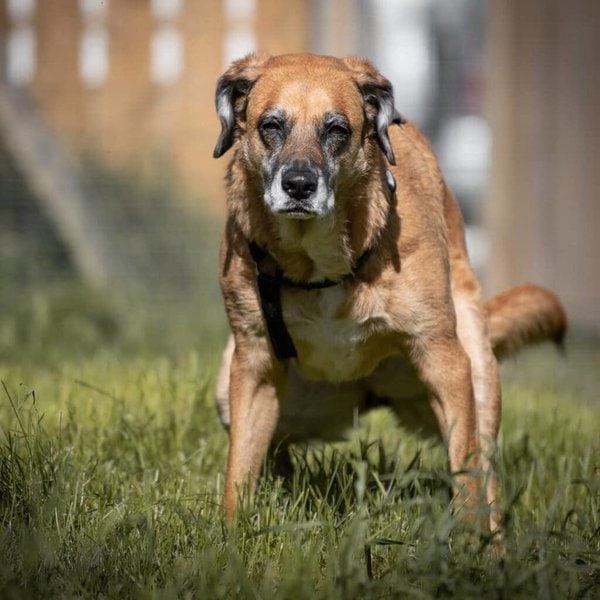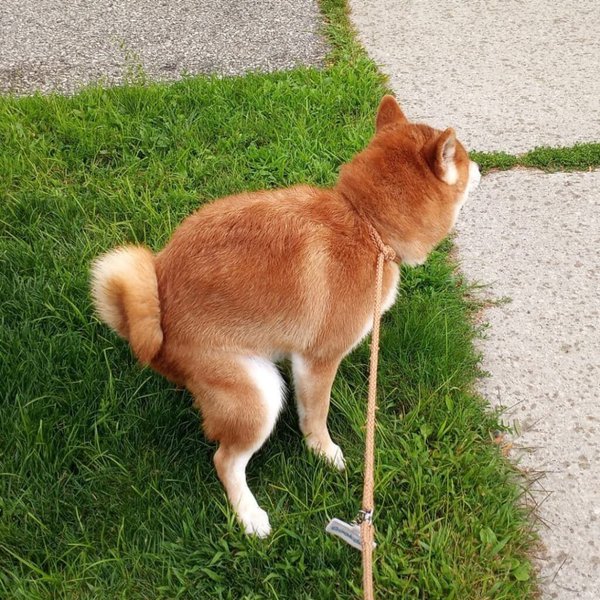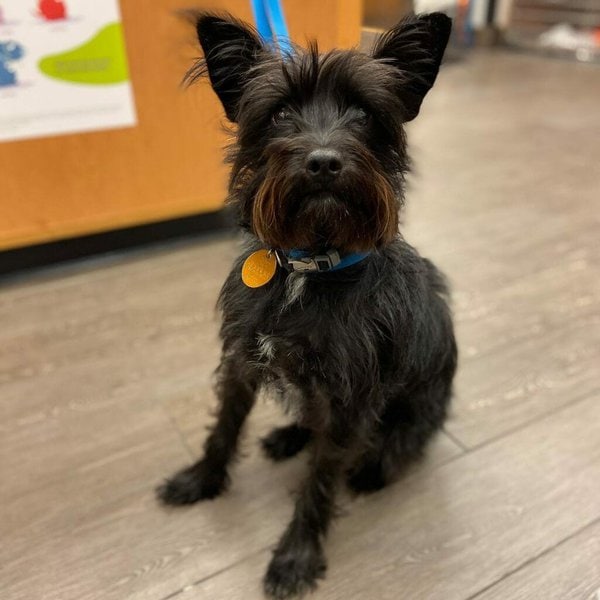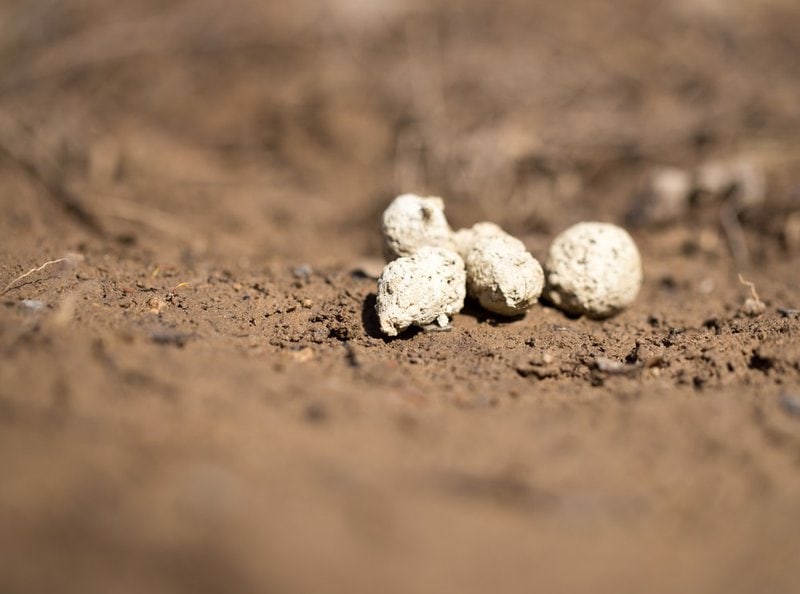You may find it gross to discuss your dog’s stool, but did you know that your dog’s poop is actually an indicator of its health? Since your fur baby cannot tell you if something is not right about its body, you may want to go the extra mile by observing its poop. If our eyes are the windows to our souls, for our dogs, their poops are the windows to their bodies!
Yes, you should be worried when you see white specks in your dog’s pooch. This is because the frequency, color, and consistency of a dog’s stool change, depending on the conditions of its liver, stomach, pancreas, and other types of infections. As an example, dark red stool often indicates the presence of blood while green stool indicates a liver problem. In the case of white specks on your dog’s stool, the reasons are varied but one of those is due to worms or parasites.
Brace yourself because we’re going down and dirty by focusing your attention on the reasons why you see white specks on your dog’s poop. We’ll share tips on what you can do at home to prevent your dog from becoming infected as well as the treatment options available.
Does Rice Leave White Specks In Dog Poop?
Yes, undigested rice does leave white specks in your dog’s poop. And, when taking a closer look at your dog’s stool, the first thing to watch out for is if those white specks are animating or not.
Apart from rice, inanimate white specks on dog’s poop can be any of the following: remnants of undigested bones or dog treats, and undigested medicine tablets. It is also possible that your pooch is on a high-calcium diet.
Undigested Rice
If your pooch is not used to eating human food like rice, its stomach will have a hard time digesting this type of grain. As a result, the undigested white rice leaves tiny segments which are visible in your dog’s poop.
Be careful when throwing away your leftover food. Dogs have a very keen sense of smell, and your pooch may rummage through it and devour any unfinished food left in the trash.

Remnants Of Bones Or Dog Treats
A lot of dog food in the market today contains white traces of bones that are hard to digest. You may be horrified to hear this news but, actually, there’s no need to worry as these are safe for your pooch. It is impossible for a meat-based dog food to not have any trace amounts of bones and tissues, unless vegan dog food is involved.
In addition, if you have given rawhide treats, the white specks that look like seeds on your dog’s poop may be because of these doggie treats.
Undigested Medicine Tablets
Prescribed medicine tablets are not easily broken down in your dog’s digestive system. As a result, some pieces of the tablets remain undigested and are released in its stool that can look like white seeds.
High-Calcium Diet
Are you giving your pooch raw food diet? If yes, the white specks on its poop may be a result of its raw food diet, which is very high in calcium. In fact, there are some cases when the dog’s poop turns white.
If you think that this may be the cause why you are seeing white specks on its poop, you may want to consult a vet to reformulate your pooch’s diet.
What Do Parasite Eggs Look Like In Dog Poop?
Now, what if those white specks on your dog’s poop are animating? Then, they are most likely parasites. There are 2 types of parasites that can be seen by the human eye, these are tapeworms and roundworms. Hookworms are microscopic in size but these are common if you live in a warm and moist environment.
Tapeworms
These are intestinal parasites that are passed on to your dog through the ingestion of fleas carrying such parasites. Actually, tapeworms are the most common reason behind those white specks on your pooch’s poop.
Tapeworm eggs look like grains of white rice on your dog’s poop and are usually ¼ to ½ inch in length. They are also characterized by their thick and bump-like appearance on the surface.
Aside from being visible in dog’s poop, these tapeworms can be seen hanging around the fur or maybe even crawling around the anal area.

Roundworms
Regardless if you have an indoor or an outdoor dog, it will surely get infected with roundworms. In fact, mothers pass on roundworms to their puppies while they are still inside the womb. Another mode of transmission is when puppies eat larvated eggs while nursing.
We know how dogs love to dig the soil which is also another way of getting infected with roundworms.
The size of the roundworms is from 3.9 to 4.7 inches in length and these are usually whitish to cream, or occasionally brown, in color. Roundworms are thinner and have smoother skin than hookworms. Plus, roundworms are generally longer than hookworms.
If you have spotted animated spaghetti-like parasites in your dog’s stool, those are sure signs of roundworm infestation.
Hookworms
As the name suggests, hookworms are characterized by their hook-like mouthparts which they use to attach themselves to the lining of your dog’s intestinal wall. Unlike the intestinal parasites discussed previously, hookworms are too small to be seen by the naked eye.
Hookworms are only ⅛ inches in size but despite their size, they cause a great amount of discomfort to your dog. If infected, your dog can suffer from inflammation in the intestines as well as severe anemia. This is because hookworms survive by feeding large amounts of blood from your dog’s intestinal wall.
The 4 ways of transmission are through ingestion of the larvae present in contaminated soil and by grooming its paw pads. Also, hookworms are transmitted through the skin, through the mother’s placenta, and lastly through the mother’s milk.
How Do You Get Rid Of Intestinal Parasites In Dogs?
Some of the ways on how to get rid of intestinal parasites can be done in your home. It is true that it is nearly impossible for your pooch not to get infected, but there are preventive ways that fur parents can do to fight these intestinal parasites. These are flea-free surroundings, routine testing, and good hygiene.
But, before tackling these 3 preventive steps, let us enumerate for you the symptoms of intestinal parasites to be certain that your dog has parasites.
Signs Of Intestinal Parasites
Besides the white specks on its poops, other symptoms will include:
- Vomiting
- Loose stool
- Diarrhea
- Lethargic behaviors
- Potbelly appearance
- Blood in the stool
- Gassy tummy
- Weight loss
- Loss of appetite
If your dog shows any of these signs and you suspect intestinal parasites, practice the tips below to prevent intestinal parasites.

Flea-Free Surroundings
The best way to control flea infestation is by having a constant flea control regimen. The key is consistency because if your dog is on an on and off flea control regimen, it is most likely that your pooch will be infected not just with fleas but with intestinal parasites as well.
The options available for a flea-free environment are oral, topical, and injectable medicines.
Another step for a flea-free surrounding is by vacuuming every nook and corner of your home. By doing this, you’d be able to target those flea pupae that will hatch in just a few days.
Not to forget that your outdoor area also requires cleaning. In severe cases, the use of a pet-safe spray yard may be recommended to kill fleas that carry tapeworm eggs.
Routine Testing
You can request your vet to perform a simple screening test, so you will know right away if your pooch needs treatments.
A fecal examination is a good way to determine if your dog already carries any of the intestinal parasites we’ve talked about earlier. Screening of fecal samples is recommended annually, regardless of age.
Good Hygiene
Good sanitation is one of the effective ways to get rid of intestinal parasites. This means cleaning up after your dog defecates since intestinal parasites are spread through contact with animal feces. A fecal contaminated yard makes your dog susceptible to intestinal parasites.
Some dogs have a bad habit of eating poops, which is a sure way to get infested. This is another reason to clean your outdoor surroundings. Plus, we recommend that you put your pooch on a leash when you are in a place where fecal matter from other animals is accessible to your pet.
What Are Small White Worms In Dog Poop?
Besides these aforementioned parasites, tapeworms, roundworms, and hookworms, small white worms found on your dog poop can also be due to whipworms, which are diagnosed by finding microscopic eggs in the dog’s stool.
The problem with whipworms is that they are difficult to find, more so because whipworms do not pass eggs on a dog’s stool in a consistent manner. This is why multiple fecal samples are required.
Aside from the home preventive steps we talked about earlier, it is advisable to follow a strict deworming schedule for your dog. In this section, we’d enlighten you on issues like deworming schedules and what to expect the first few hours after deworming and what to expect a few days after deworming your dog.

Deworming Schedule
Deworming is an approach to getting rid of any types of white worms that are present in your dog through medication pills or an injectable medicine.
You should not take the deworming schedule for granted, if left untreated, these white worms can migrate to the vital organs such as the lungs, liver, heart, brain, and eyes.
- For puppies, they should be given deworming medicines beginning 3 weeks of age, and then every 2 weeks until they reach the age of 12 weeks.
- For adult dogs, if it is active and is always outdoors, we recommend every 3 months. But, if it is an indoor dog, every 6 months is recommended.
- For newly-adopted dogs, deworm them as soon as you bring them home. Repeat it after 2 weeks and then follow the re deworming schedule for adult dogs.
For whipworms, medicines, such as fenbendazole or febantel, are used to kill these worms. The treatment usually lasts for 5 days and will be repeated again after 3 weeks.
The First Few Hours After Deworming Your Dog
It is normal to see your dog vomit after a few hours of administering the medicine. In case your dog vomited the pill, call the vet so a new pill will be re-administered again.
Also, do not be alarmed if you notice that your dog has loose stool for a few days after deworming as diarrhea is one of the common side-effects of deworming medicines.
What Can You Expect A Few Days After Deworming?
Most deworming medicines begin working within 12 hours after administration. You would know that your dog has been successfully dewormed because you may spot some dead worms in the stool.
In case you still see animated white specks or alive white worms, do not worry because your dog’s body is expelling those parasites from its body. Depending on how heavy the infestation is, some dogs may continue to poop worms for up to 2 weeks.
How Do You Treat White Worms In Dog’s Poop?
Treatment depends on the type of worm that is found on your dog’s poop, but usually, it can either be injectable or oral medications. If you are wondering whether dogs can get rid of worms on their own, the answer is ‘no’.
For this last section, we’d talk about the treatment strategies on how to treat tapeworms, roundworms, and hookworms in dogs.

How To Treat Tapeworms
The drug used to kill tapeworms is praziquantel. It can be given orally or as an injectable medicine. Once the medicine is administered, what it does is cause the tapeworms to detach from the intestinal wall and be digested, then pass out in your dog’s feces. As a result, the dead tapeworms are too small to be seen by the naked eye.
Though not common, the possible side effects of praziquantel are vomiting, diarrhea, loss of appetite, and lethargy.
How To Treat Roundworms
There are different kinds of medicines currently used to treat roundworms. These are fenbendazole, pyrantel, piperazine, moxidectin, and milbemycin.
Any of the medicines mentioned will only target the adult roundworms and this is why it will be administered again after 2 weeks to kill the larvae that have matured.
How To Treat Hookworms
Pyrantel pamoate is the drug being used to address the problem of hookworms. Aside from this deworming medicine, some dogs with advanced symptoms of hookworm infestation are given iron supplements and are shifted to a high-protein diet to combat anemia.
However, if anemia is already very severe, fluid therapy and blood transfusions may be done because anemia can be life-threatening.
Why Is It Important To Treat White Worms In Dogs?
These white worms or intestinal parasites are zoonotic, meaning they can be passed on to you and your family members.
Roundworms, for example, are dangerous especially if you have kids at home who play in contaminated areas such as your dog’s sleeping area. If contracted, the lungs, eyes, and the heart could be affected.
Contaminated soil can also be a mode of transmission of canine hookworms to humans. This disease is called cutaneous larva migrans. Walking barefoot in your garden or a doggie park where its soil is contaminated by fecal matter, the hookworm larvae can possibly enter via your feet. You’d feel an intense skin itching, and will have red lesions on the affected parts.





